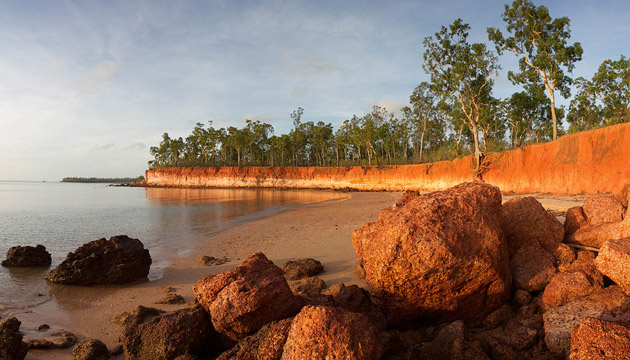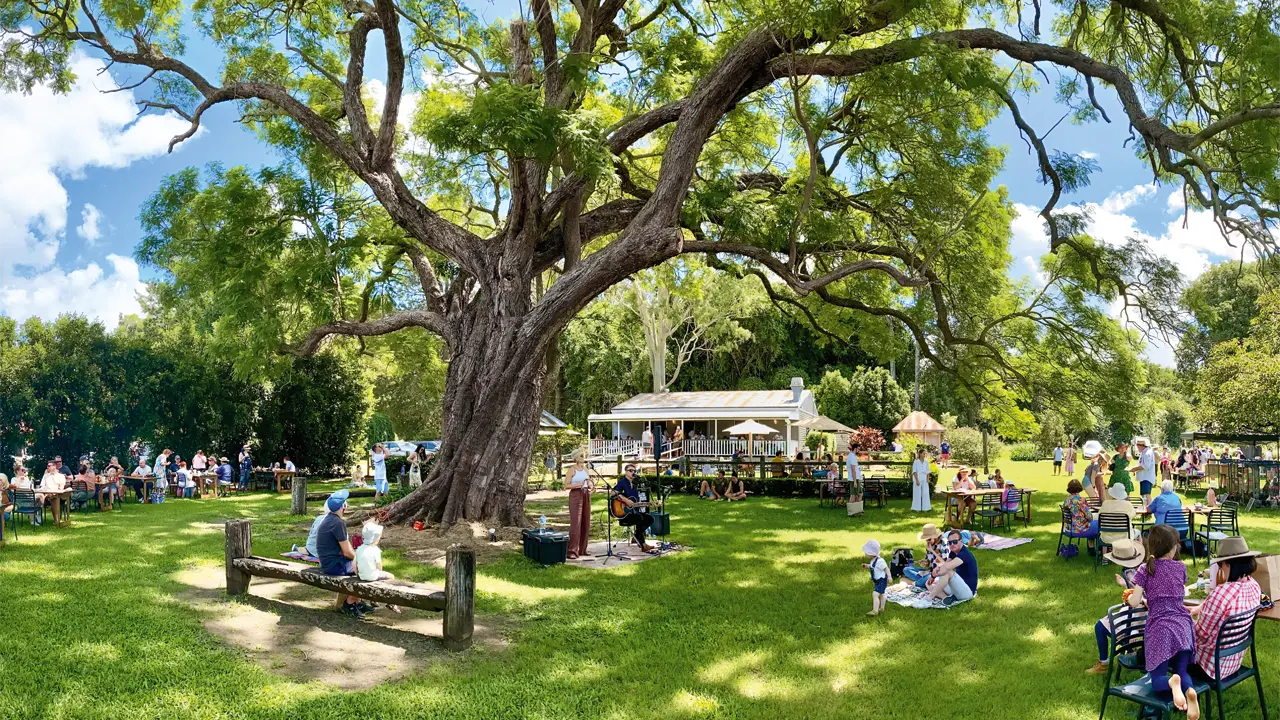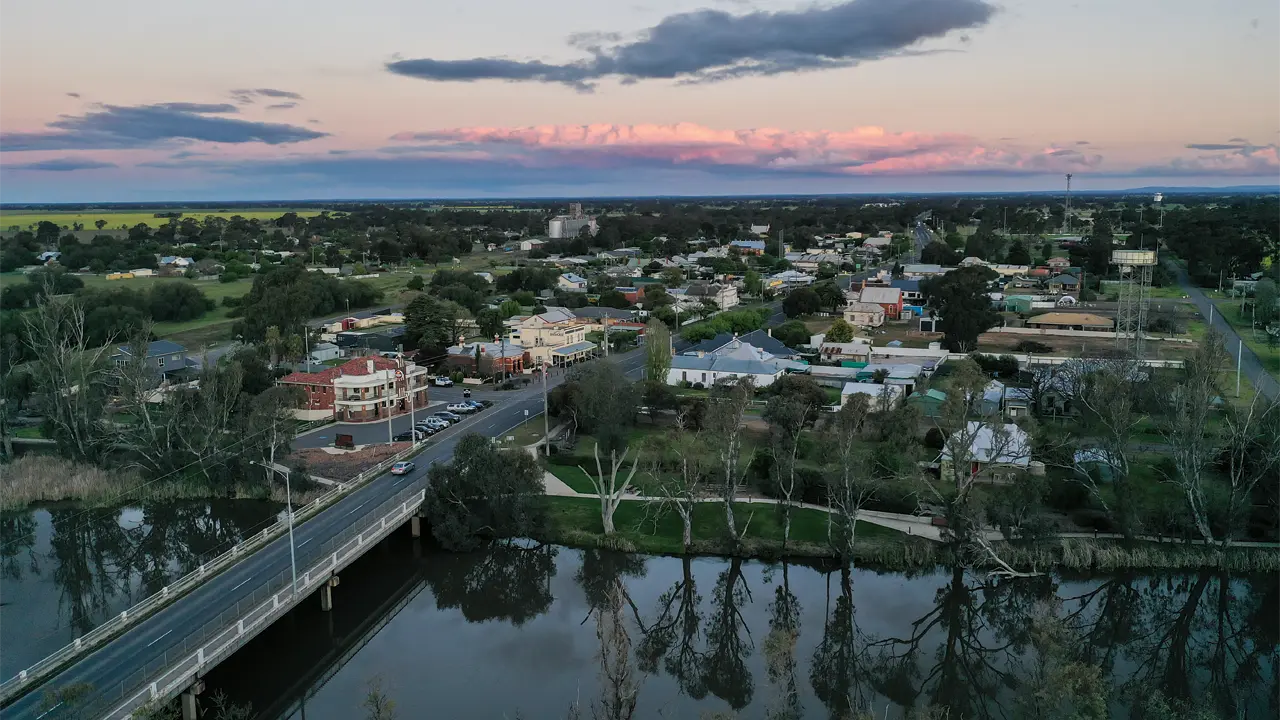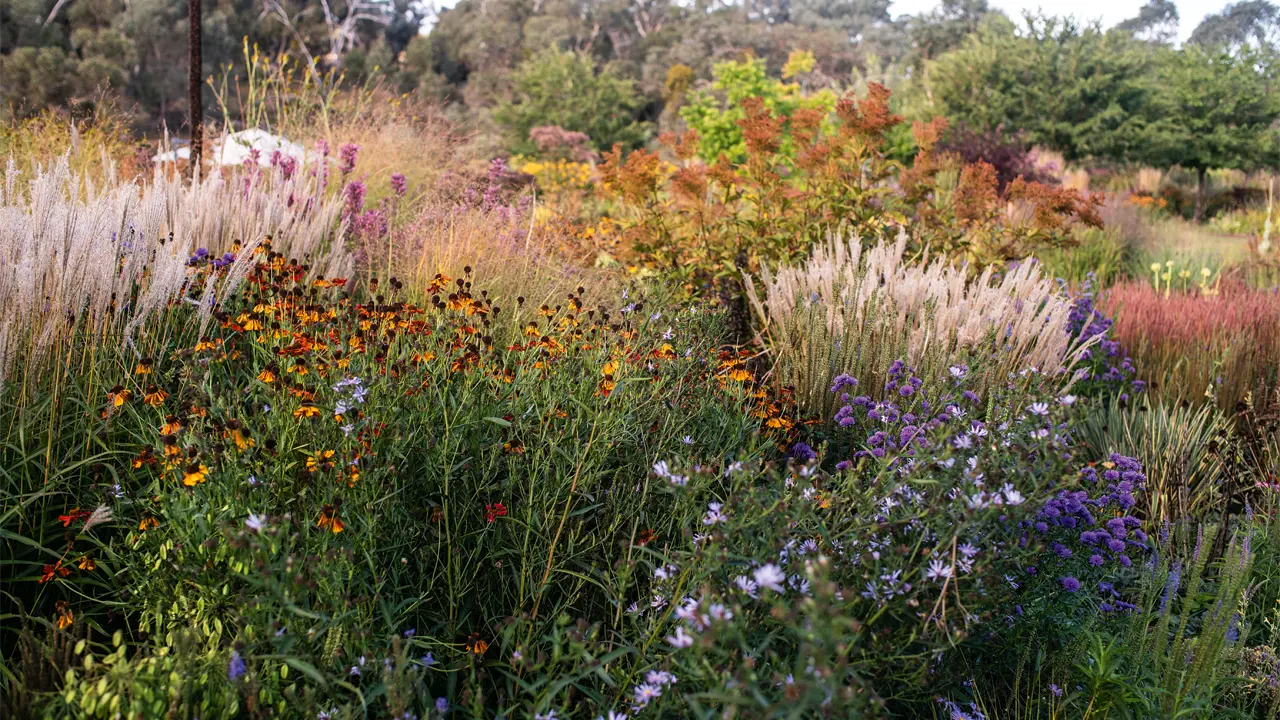A luxury safari to the Northern Territory’s remote Cobourg Peninsula provides an ultimate Top End experience.
Story By David Hancock
The narrow headwaters of the South Alligator River are languid, green and tempting. Deep shade is cast by giant paperbarks that bend over the waterway and, in the shadows, archerfish spit pellets of water at insects on overhanging leaves. Flowering trees attract honeyeaters that jump from branch to branch and the air is filled with the constant hum of cicadas, lifted by the melodic call of the koel, or ‘rain bird’. This is Kakadu in the late dry season: warm and enticing but inherently dangerous. “This country can tease you so badly,” says Venture North guide David McMahon. “The water looks inviting but a croc could be lurking anywhere.”
These headwaters are the second stopover on a five-day tour from Darwin to western Arnhem Land and Cobourg Peninsula, via Kakadu National Park. After sampling their dangerous beauty, Maguk, where the tour heads next for a swim, is heaven. There is a waterfall that flows year-round and an enormous rock pool at the base of the Arnhem Land escarpment – and it’s croc-free. Snorkelling around the edges reveals harmless aquatic file snakes anchored to the roots of pandanus trees, as well as archerfish, freshwater garfish, Long Toms and plenty of small barramundi.
David, who was a chef in a previous life, ends the first day of the tour with barramundi and salad at Lakeview Park where guests stay in tropical bungalows. Over dinner he describes the tour’s final destination on the Cobourg Peninsula in remote north-western Arnhem Land where Venture North has a permanent camp some 570 kilometres by road from Darwin.
The following day the tour heads across the East Alligator River, which defines the eastern border of Kakadu National Park, and into Arnhem Land. A wild and sparsely populated part of Australia, Arnhem Land takes up 97,000 square kilometres and is home to 16,300 Aboriginal people, many of whom live traditional lives and are governed by ceremonial rules.
Joey Nganjmirra is such a person. An artist at Gunbalanya, Joey also works as an interpretive guide taking visitors to the labyrinth of caves and fissures of the escarpment that overlooks the township. The Bininj Aboriginal people have illustrated the walls and ceilings of the rock here for thousands of years. “My ancestors walked over this country and they painted what they saw,” Joey says, pointing to images of barramundi, saratoga, kangaroo, emu and other beings. “They also painted spirit figures and told stories about where we come from.”
This Story is from Issue #87
Outback Magazine: Feb/Mar 2013










